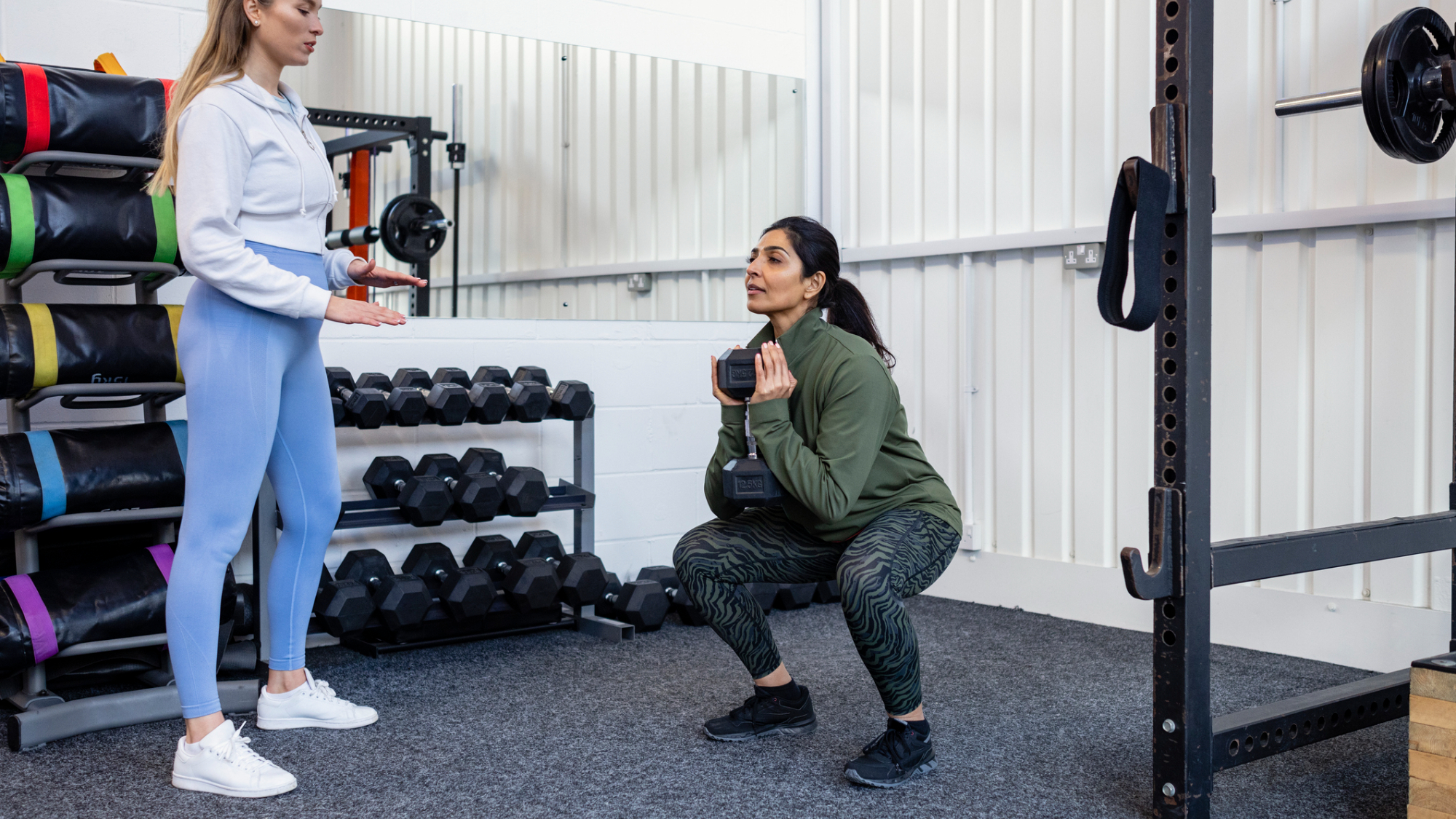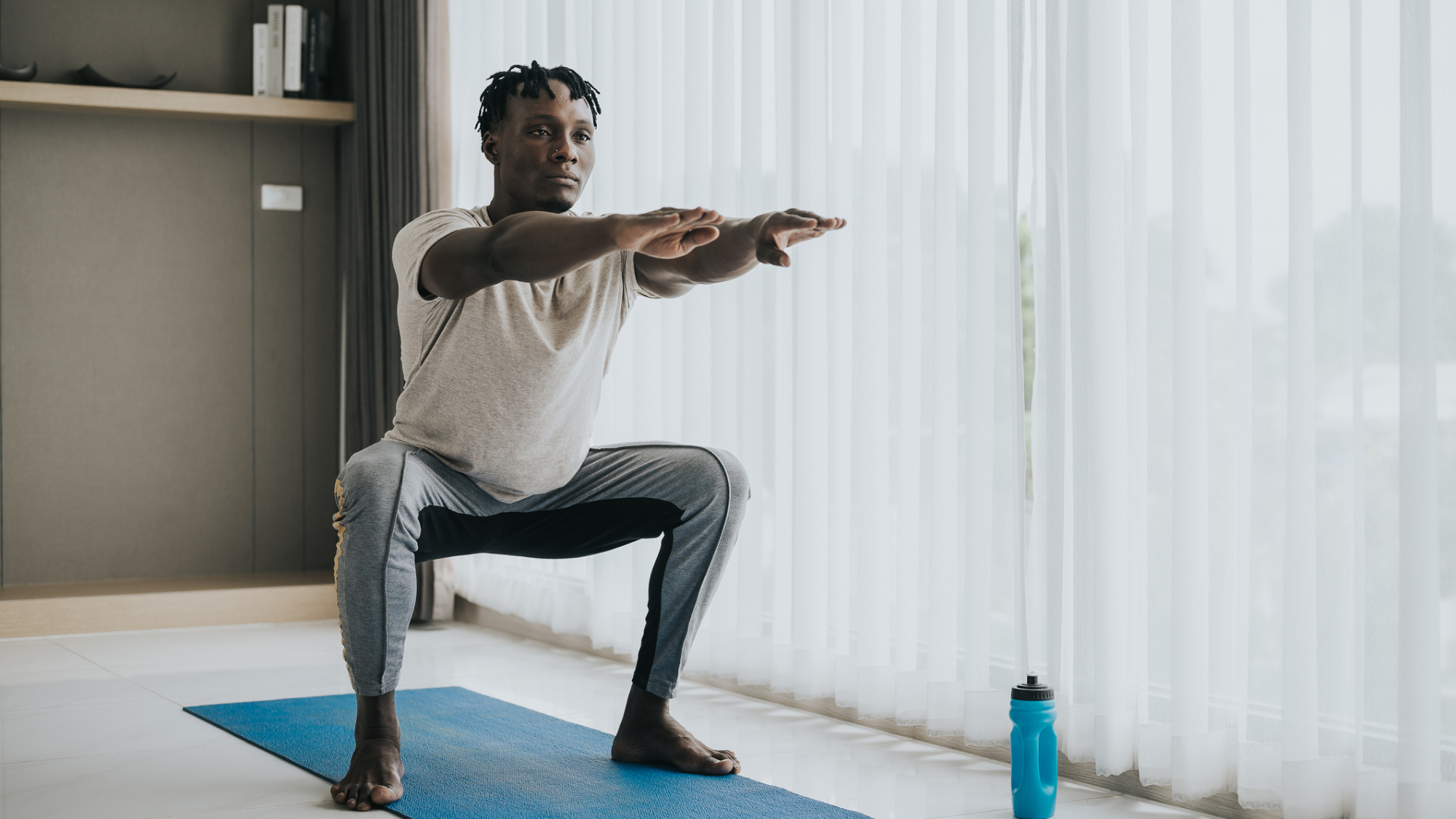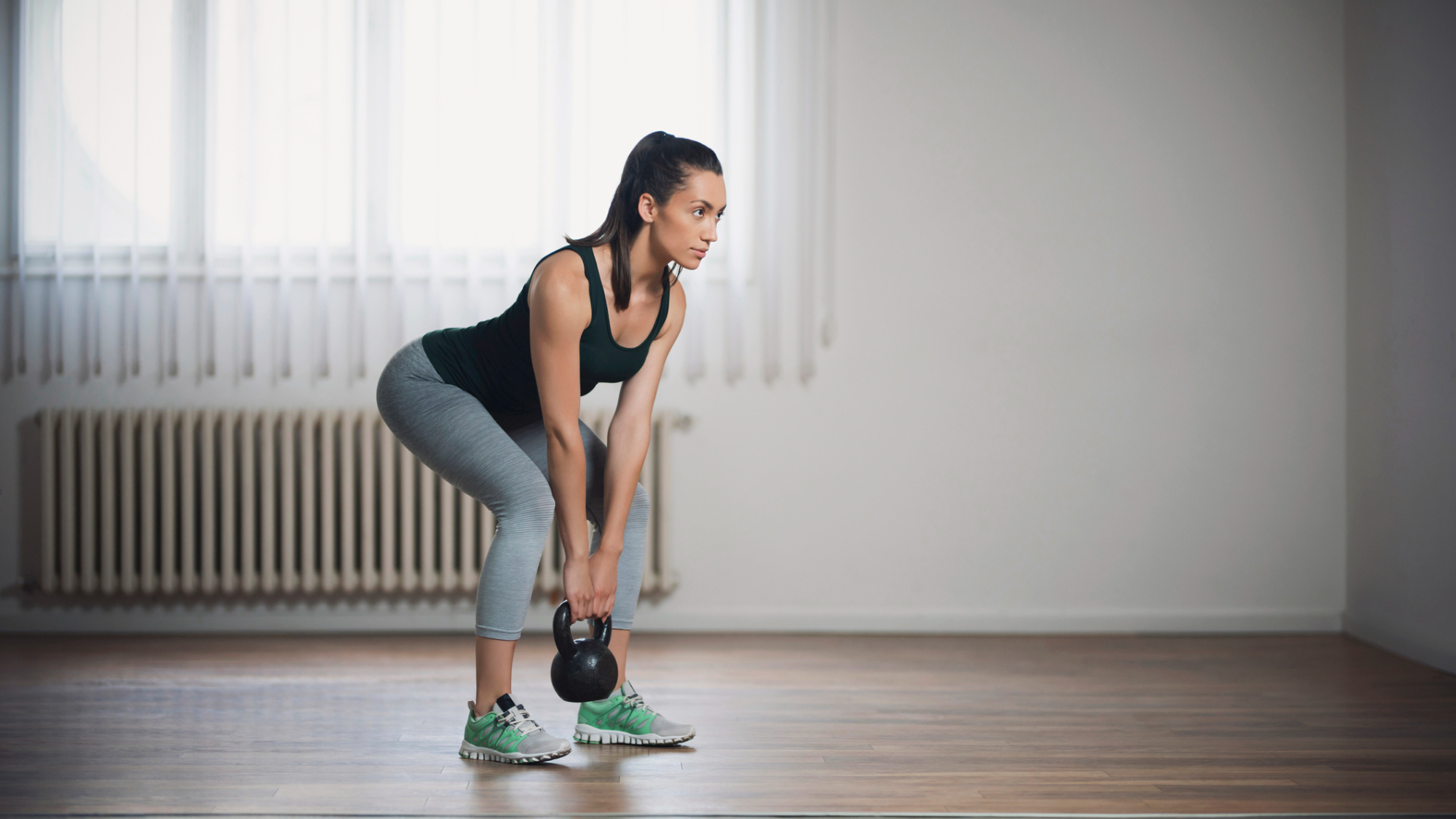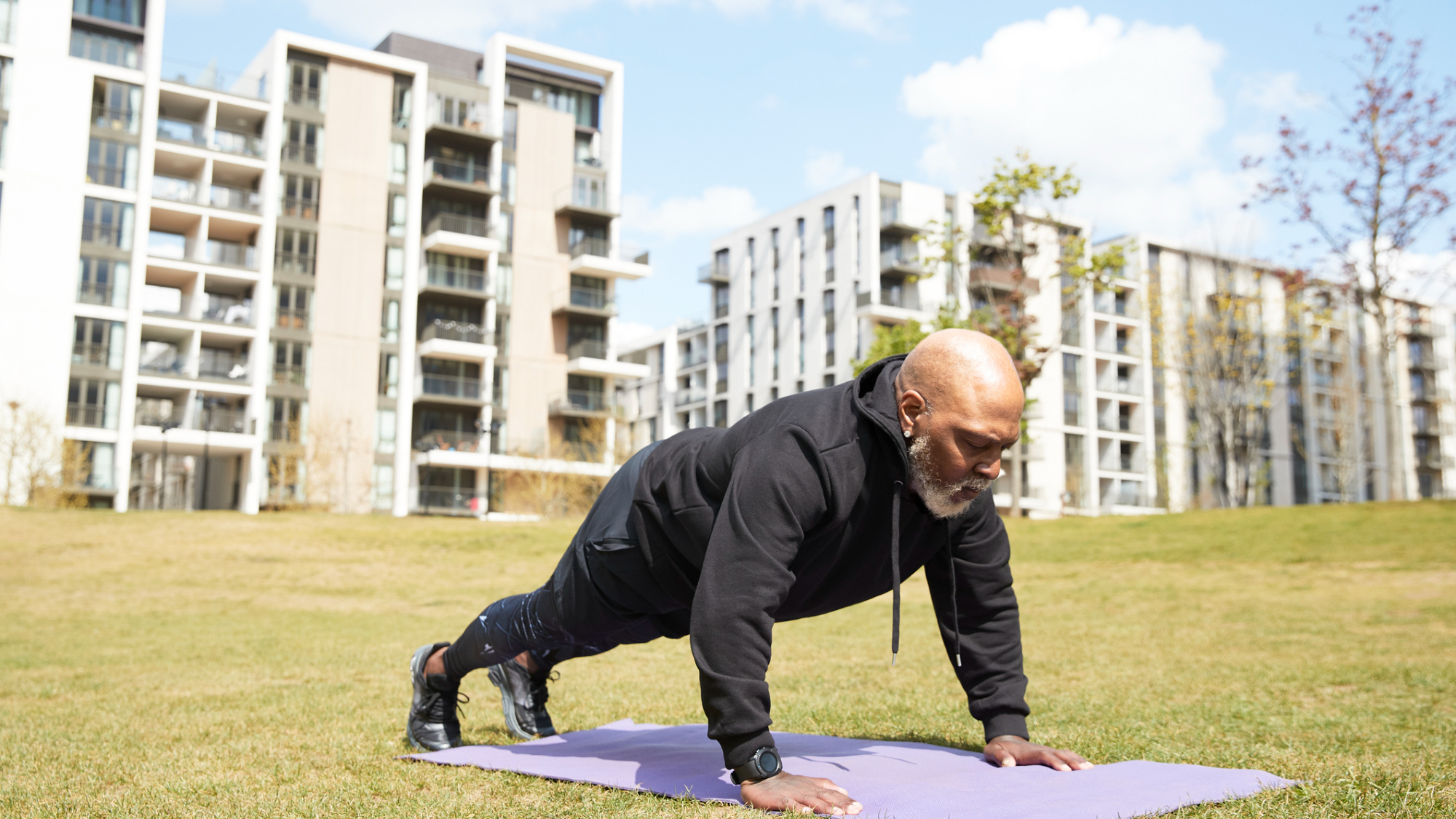
Strength training is for everyone, and it can be especially beneficial as we grow older, according to fitness coach Jen Rulon.
This is because it helps maintain muscle and strength, making daily tasks easier as well as boosting your balance and reducing your risk of injury.
The end result? You can retain a fit and functional body at any age, leaving you able to do everyday tasks like carrying heavy grocery bags, picking up your kid or grabbing something off the ground.
Below, Rulon shares her three top strength training exercises for people aged 50 and above.
Jen Rulon's top three strength training exercises
1. Squat

- Stand upright with your feet roughly hip-width apart and your toes pointed outwards slightly. The optimal starting position will vary from person to person, so play around to see what feels best for you.
- Push your hips back then bend your knees to lower your hips towards the ground, as if you were sitting onto a chair behind you. As you do this, keep your core braced, your chest up and your back straight.
- When you have lowered your hips as far as you can towards the ground, while keeping your chest facing forward, drive through your feet to return to the starting position.
Benefits of squats
Rulon’s picks revolve around compound exercises, which recruit multiple muscles and joints for maximum efficiency and effect.
The squat is probably the best-known example, activating the glutes or backside muscles, quadriceps and hamstrings (which make up the thighs), abs and calves.
Rulon says strengthening these areas, while also developing balance and coordination with the squat movement pattern, is a great way to reduce your risk of falls or injury.
"They don't have to be heavy squats to hold plenty of benefits either," she adds. "Squats to a chair and air [unweighted] squats are an incredible way to add squats to your routine."
2. Deadlift

- Stand upright with your feet about shoulder-width apart and your toes facing forwards. Hang your arms towards the ground in front of you.
- Keeping a straight back, hinge at the hips to lower your hands towards the ground, then bend your knees until your hands reach the floor. Your hands should stay close to the front of your legs at all times.
- When you reach the bottom position, drive through your feet to stand back upright.
Benefits of deadlifts
Deadlifts recruit lower-body muscles like the glutes, quadriceps and hamstrings, as well as upper-body muscles in the lower back, upper back and core.
It’s also an incredible functional strength training exercise, mirroring movements we do on a regular basis.
"Many people will bend at the waist to pick up a book, a child, a pencil or pull a weed out of the ground, and then the back can tighten up," says Rulon.
Practicing this movement pattern and building strength in the positions involved can help prevent this.
Start by trying this exercise without any extra equipment. Then, as you grow stronger, you can hold two dumbbells, a kettlebell or a barbell in your hands to increase the difficulty.
3. Push-up

- Assume a push-up position, with your weight spread between your hands and toes. Your hands should be beneath your shoulders, and your body should form a straight line from your neck to your heels.
- Keeping your elbows tucked into your sides, your core braced and your body in a straight line, lower your chest towards the ground.
- When it is about an inch from the floor, push through your hands to return to the starting position.
Benefits of push-ups
Rulon says this is another example of a functional exercise; it develops the strength needed to push yourself up and off the ground.
"The muscles used for push-ups are the chest, shoulders, triceps, biceps, upper back and lower back," she adds.
Should you continue strength training after 50?
"Yes! 100% yes! Especially as we age, strength training is less about lifting heavy weights and more about training to pick up your kids or grandchildren from the ground, pick up a pencil you dropped without hurting your back, or mow the lawn with a push mower."
What are the positive impacts of strength training for people aged 50 and above?
"Our muscle mass will decline at least 3-8% every decade after turning 30, so strength training is essential because we want to maintain our muscles for as long as possible. After 60 years old, this decline increases, which can contribute to falls and injuries.
"Not only do we start to lose muscle strength and power, but balance and stability can also deteriorate.
"Having more muscle will help prevent falls and support bone density. When building muscular power, people also strengthen the tendons and ligaments around their joints, and learn how to maintain balance. For example, if someone is doing walking lunges with dumbbells, it will develop their strength, flexibility and balance."
Want to add some new weights to your home workout set-up? Then take a look at our guide to the best adjustable dumbbells.







